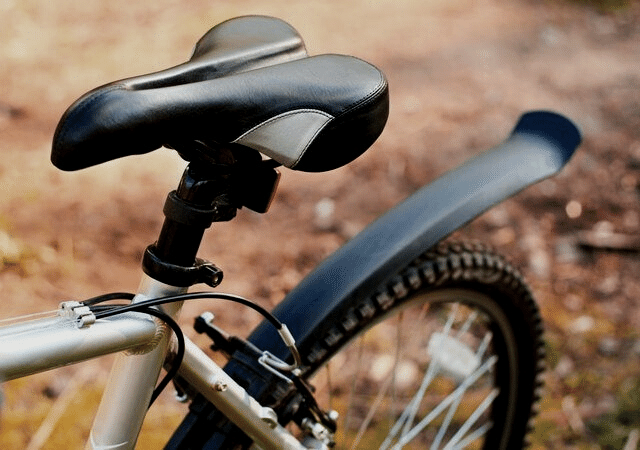Indulging in indoor cycling on a stationary bike is an excellent way to reap the numerous health benefits associated with cycling. However, one common obstacle that enthusiasts often face is discomfort and pain in the seat area, which can hinder their workouts. This discomfort stems from the pressure exerted on the sensitive areas, resulting in numbness, chafing, and saddle sores. Fortunately, there are effective solutions to alleviate this issue and enhance your cycling experience. Read on to discover practical ways to make your stationary bike seat more comfortable, ensuring that your indoor cycling sessions are enjoyable and pain-free.

Image: www.bustle.com
1. Find the Right Seat Size and Shape
The foundation of a comfortable stationary bike ride lies in selecting the correct seat size and shape. Determining the optimal seat size is crucial, as it ensures proper weight distribution and reduces pressure points. To measure your ideal seat width, sit on a flat surface with your feet flat on the floor, shoulder-width apart. Measure the distance between your sit bones, which are the two protruding bones located at the base of your pelvis. The resulting measurement should correspond to the width of the bike seat you choose.
In terms of shape, bike seats come in various designs to accommodate different anatomies. If you experience discomfort in the perineal area, consider a seat with a cutout or split design. This design relieves pressure on the sensitive tissues, alleviating numbness and pain. Additionally, seats with a wider rear section provide better support and prevent the rider from sliding forward. Experiment with different seat shapes to find the one that best suits your body and riding style.
2. Adjust the Seat Height and Position
An improperly adjusted seat can exacerbate discomfort and hinder your cycling performance. The correct seat height allows you to extend your leg almost fully at the bottom of the pedal stroke, with a slight bend in your knee. To adjust the seat height, sit on the bike and place your heel on the pedal in its lowest position. Your knee should be slightly bent at this point. If your knee is locked out or overly bent, adjust the seat accordingly.
Furthermore, the fore-aft position of your seat can impact comfort. If you experience numbness or pain in your hands, move the seat forward slightly. Conversely, if you feel excessive pressure on your sit bones, move the seat back. By optimizing both the height and position of your seat, you can distribute weight evenly and reduce discomfort during your rides.
3. Use Padding and Cushioning
If the standard bike seat still causes discomfort, consider incorporating additional padding or cushioning. Gel-padded seat covers are a popular option, as they provide extra cushioning and support, reducing pressure on sensitive areas. These covers are readily available and easy to install, instantly upgrading the comfort of your seat.
For more substantial cushioning, you might opt for a padded bike seat replacement. These seats are designed with thick layers of foam or gel, providing exceptional comfort even during extended rides. They come in various shapes and sizes, so you can find one that fits your anatomy and preferences.

Image: therideround.com
4. Wear Padded Cycling Shorts
Padded cycling shorts are an essential accessory for enhancing comfort during indoor cycling. These shorts feature built-in padding that provides additional cushioning and protection for the sensitive areas. The padding helps absorb shock and vibrations, minimizing pressure on the seat and reducing chafing.
When choosing cycling shorts, pay attention to the padding thickness and material. Thicker padding offers more cushioning, but it may also be bulkier and less breathable. Choose a pair of shorts made from moisture-wicking fabrics to keep you dry and comfortable throughout your workout.
How To Make Stationary Bike Seat More Comfortable
5. Take Breaks and Stretch Regularly
Maintaining proper posture and taking frequent breaks are crucial for preventing discomfort during indoor cycling. Avoid hunching over or leaning too far forward, as this can put excessive strain on your back and neck. Instead, sit upright with your shoulders relaxed and your spine straight.
In addition, regular stretching can help improve flexibility and reduce muscle tension. Incorporate simple stretches into your routine, focusing on the muscles used during cycling, such as the quadriceps, hamstrings, and glutes. Taking breaks and stretching will enhance your overall comfort and performance on the bike.







